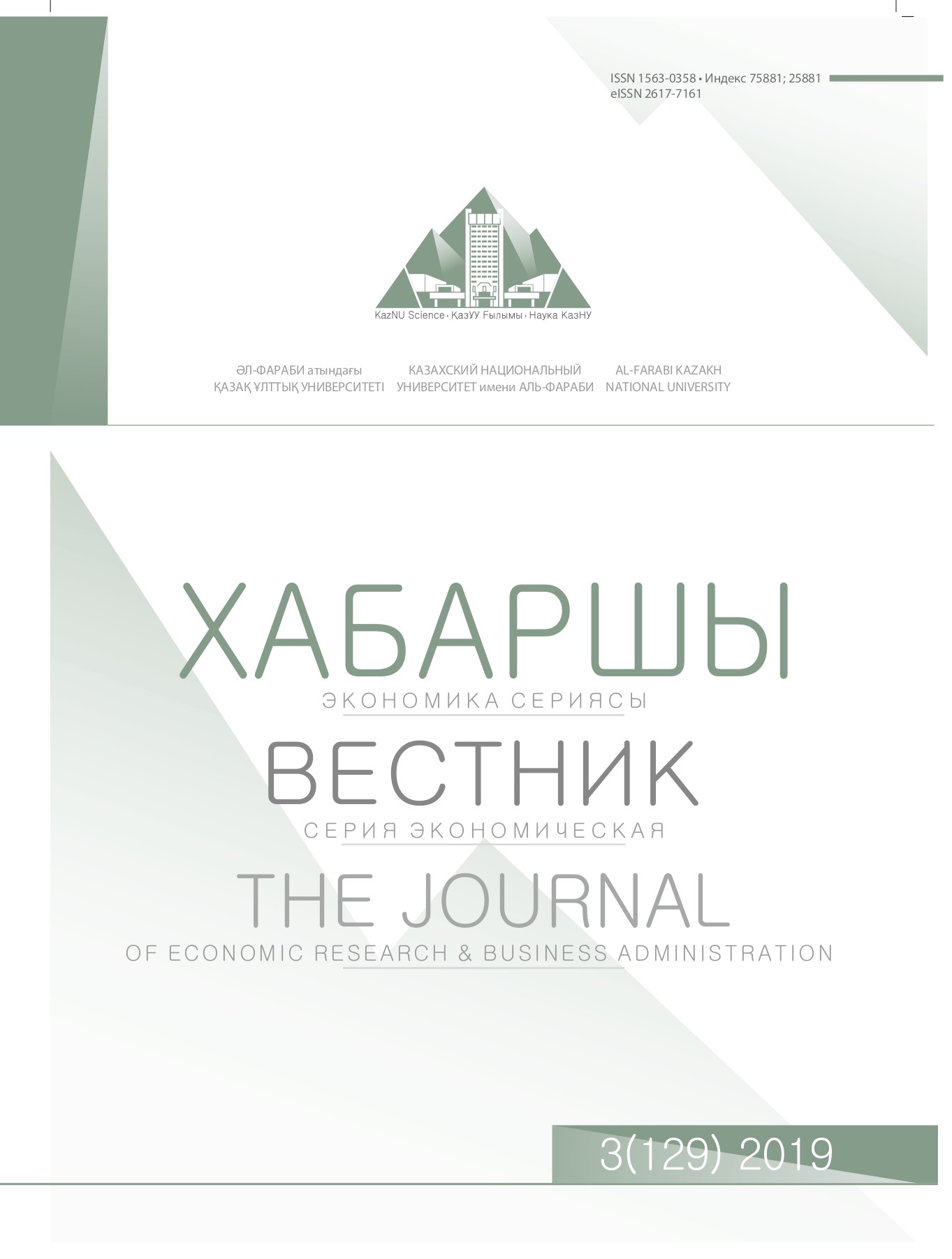PROBLEMS OF FORMATION OF THE WAGES LEVEL IN KAZAKHSTANI LABOR MARKET
DOI:
https://doi.org/10.26577/be-2019-3-e9Abstract
Increase in wages is recognized as one of the tasks within the long-term development strategy of the country in the Address of the Head of State K. Tokayev to the people of Kazakhstan “Constructive public dialogue – the basis of stability and prosperity of Kazakhstan” (Tokayev, 2019). The successful implementation of this task largely depends on solving the extremely complex problem of forming the level of wages in the labor market. A vast amount of theoretical and statistical studies on this problem, unfortunately, are not always characterized by a deeper penetration into the mechanism of formation of the level of wages in the current Kazakhstan model of the labor market. The goal of the study is to actualize the problem of the formation of the wages level in Kazakhstani labor market. Due to the totality of complex issues, the study is limited by studying only a few of them: a quantitative analysis of the influence of the main economic and institutional factors on the formation of the level of wages in the Kazakhstan labor market. Emphasizing the attention of researchers and practitioners to raising the level of wages will allow critically rethinking the existing practice of forming the level of wages. The scientific significance of the work bases on identifying the features of the manifestation of the general patterns of wage formation in the domestic labor market. The practical significance bases on obtained results those help to modernize the labor market, to bring it closer to the best practices of developed countries. They will also be taken into account in the design and implementation of effective social and economic policies.




